Art World
Painting Pumps Its Fist at the Whitney Biennial
Charting a way forward for art in dire times.
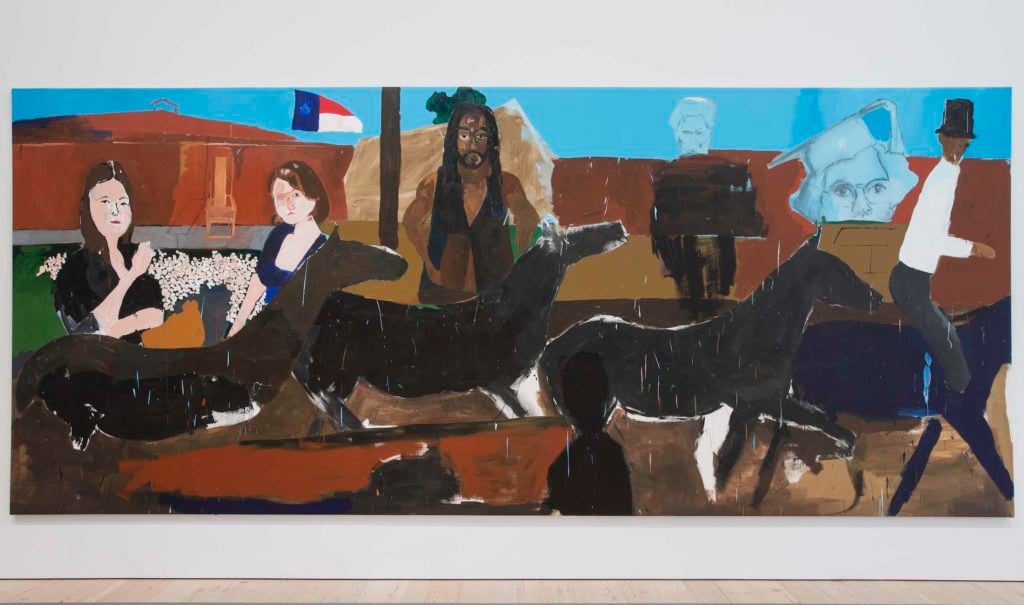
Charting a way forward for art in dire times.

Christian Viveros-Fauné

“You can feel it in the air we breathe,” curator Mia Locks writes in her essay for the Whitney Biennial 2017 catalog. The suffocating change she calls out covers the “ongoing violence against people of color at the hands of police,” the “hate-fueled mass shootings in Orlando and Charleston,” the “polarizing rhetoric of Donald Trump,” and the eyebrow-plucking anxiety accompanying the new normal—a raw current of “social tension so thick it coats the throat.”
Capped by the January inauguration of POTUS 45, these and other portentous events—the most recent include a U.S. Congressman (Steve King, R-IA) spouting white nationalist talking points on TV and government spokespersons (Kellyanne Conway and Sean Spicer) brazenly peddling alternate facts—have whip-lashed the country faster than you can say “The Daily Stormer.” Today the planet faces a made-in-America disaster unlike any since the Cuban Missile Crisis. Arguably, our politicians are largely responsible for this carnage—but what can we expect from our artists?
If marketers, pollsters, and outlets like Breitbart and InfoWars are assiduously reimagining America post-Trump, then contemporary artists and curators had better get busy, too. Because culture has become the country’s de facto battleground—Donald Trump won the election not because whites felt disadvantaged economically but because they felt denigrated socially—it has become imperative for cultural workers to stand up for open society values like transparency, artistic freedom, and intellectual inquiry.
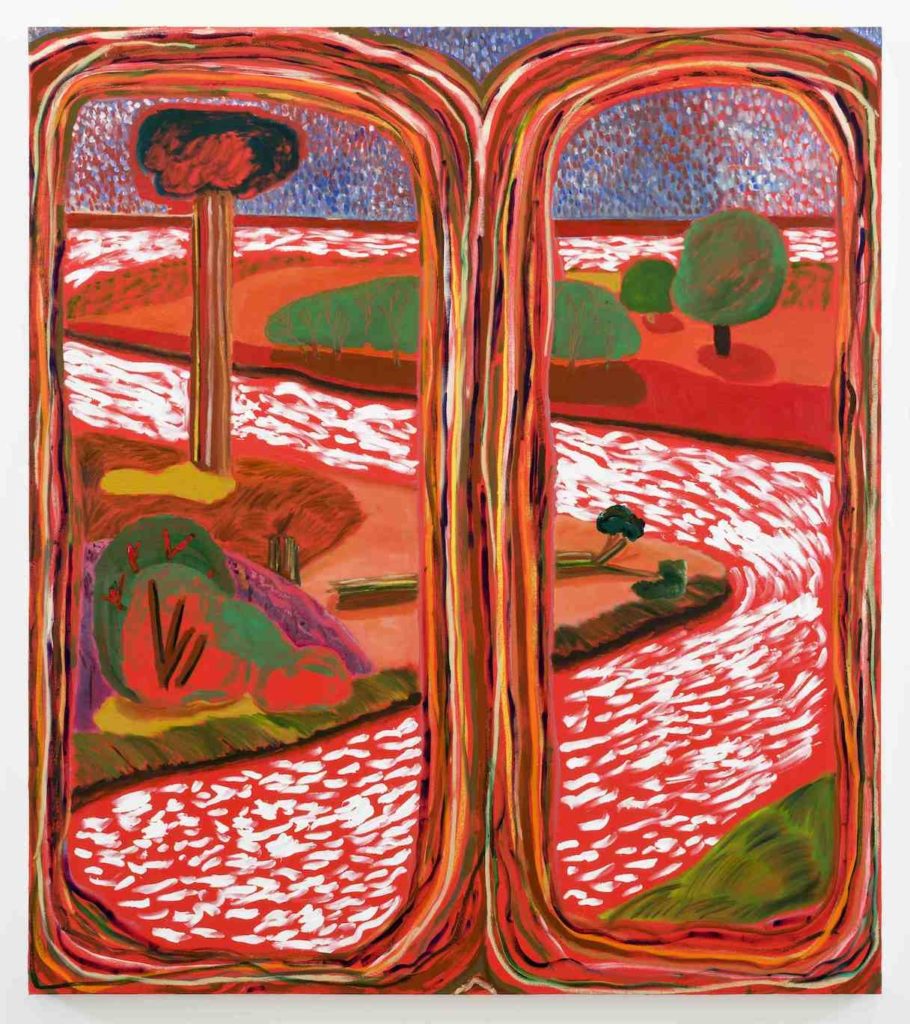
Shara Hughes, Split Ends, 2016. Oil, acrylic, and vinyl paint on canvas. Hort Family Collection.
The current Whitney Biennial is the closest we’ve come yet to that defining moment. Put in the pseudo-lingo of trending hashtags, the exhibition constitutes a first official sweeping art-world rejection of #maga and #whitegenocide and a resolute embrace of #resist and #artmatters.
But what about the show itself? Here’s a narrower art critic’s takeaway from my two visits to the Whitney Biennial 2017. The exhibition most people love to hate provides definitive direction, if not an actual road map, for art in the age of Trump. Among other inclusions, the exhibition has embraced painting—a medium recently maligned for cramming vast D.E. warehouses full of collector catnip—in a number of its more contemplative, pleasure loving, open-minded variants.
This signals that another important cultural moment is afoot. If MoMA’s controversial 2015 exhibition “Forever Now” celebrated the uncritical, get-rich-quick oil-on-canvas fantasies of the so-called atemporal world, then the paintings presented by the current Whitney Biennial come off as their historically connected opposite—complex, wordly, politically and socially contingent, and radically down to earth.
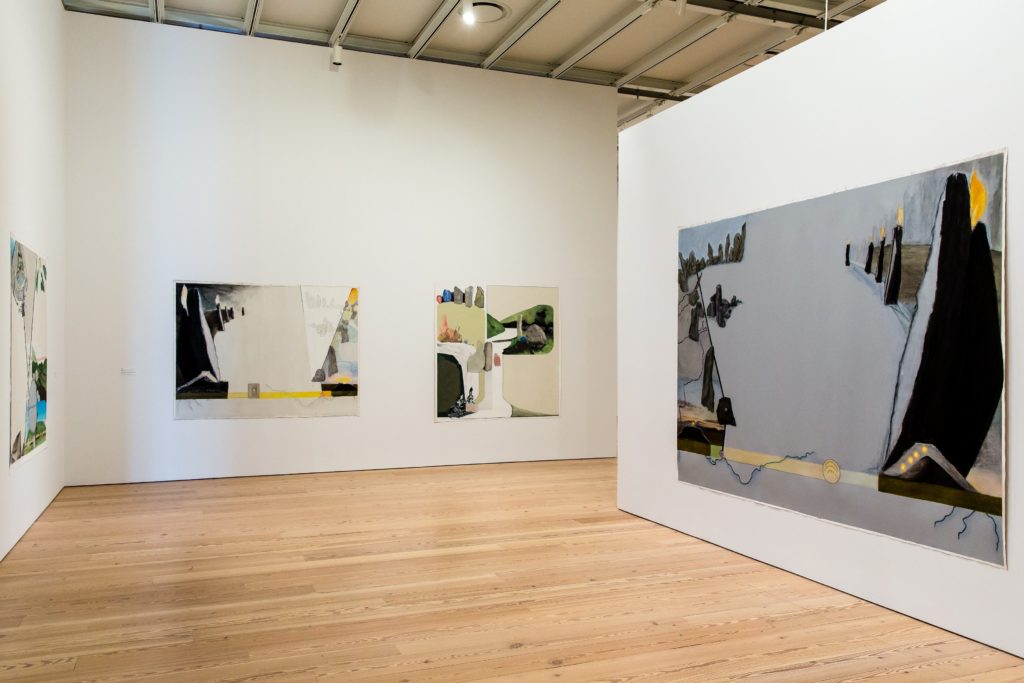
Installation view of Jo Baer. Whitney Biennial 2017, Whitney Museum of American Art, New York. Collection of the artist; courtesy Galerie Barbara Thumm, Berlin. Photograph by Matthew Carasella.
By my count this year’s biennial includes 14 painters or hybrid-painters among its 63 participants. The great majority are women, which feels unforced, as happens when an exhibition feature acres of terrific canvases. Together with their male counterparts, these participating female artists represent various generations and exhibit various stages of achievement. About half paint abstractly, though a number of them rely on figurative elements for recognizable ballast.
As for the figurative painters, many of their compositions evince socially or politically informed narratives. Notably, just one artist makes direct reference to the Presidential election—Celeste Dupuy-Spencer, who inserts a pie-eyed likeness of Dylann Roof into her drawing of a Trump rally. Anyone expecting a pile up of protest signs like those left by the Women’s March in D.C. is best advised to look elsewhere.
A rundown of some of the exhibition’s painting highlights can only skim the surface of this outstanding museum-wide display of painting. While the itch always exists to confect an alternate list for the Whitney Biennial (the full- or part-time painters Titus Kaphar, Barkley Hendricks, Noah Davis, Deborah Grant, James English Leary, William Powhida, and Guy Richards Smit would make mine), it should be resisted. When a show salves, scratching is really beside the point.
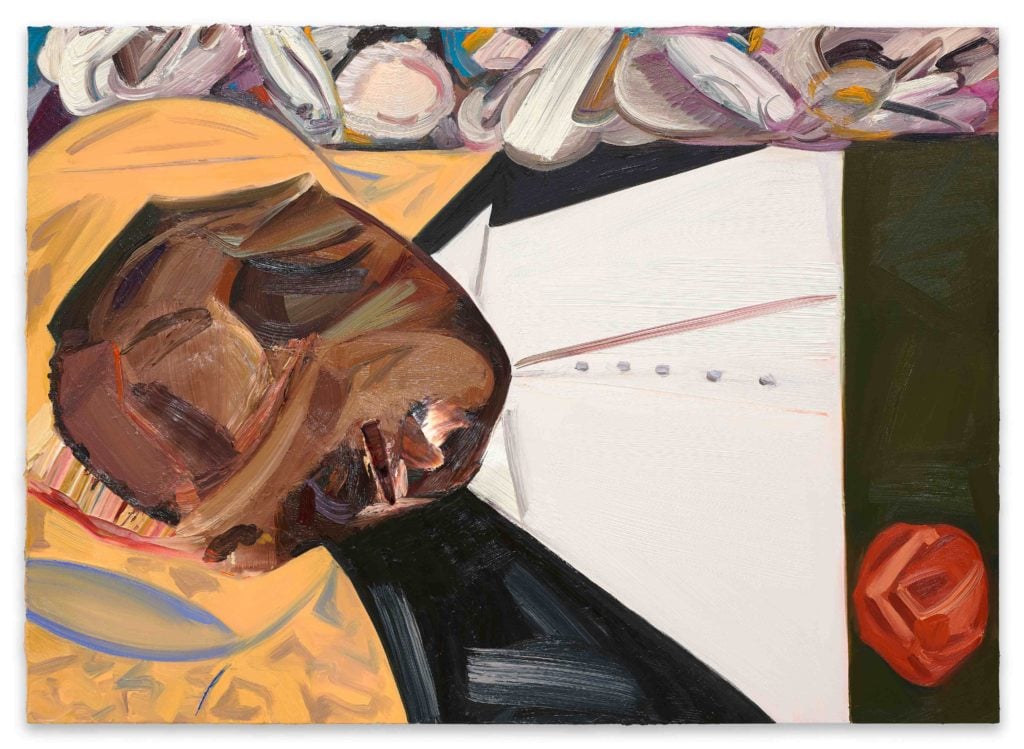
Dana Schutz, Open Casket, 2016. Oil on canvas. Collection of the artist; courtesy Petzel, New York.
Readers should take note that Locks and Christopher Y. Lew, her fellow biennial curator, chose to install many of the exhibition’s paintings in subdued single-artist galleries. That decision together with the curators’ overall judiciousness makes the generous haul of paintings selected for this biennial look positively revolutionary. For those wondering what kind of upheaval you’re in for, picture the more tolerant February Revolution, not the draconian October affair.
Consider the case of L.A. painter Henry Taylor. When not producing colorful acrylic-on-canvas celebrations of black life—like he does in a massive portrait of a man and his BBQ grill titled The 4th—the artist often looks to reinterpret America’s real-life racial conflicts. One urgent example is the cap-locks titled THE TIMES THAY AINT A CHANGING, FAST ENOUGH! Drawn directly from the video made by Diamond Reynolds of her fiancé, Philando Castile, after he was fatally shot by a Minnesota police officer on July 2016, the painting depicts a lifeless Castile lying across the driver’s seat of his car with the cop’s glock poking through the window.
Dana Schutz, a blue-chip artist known for making popular pictures I have long regarded as George Grosz Lite, contributes three paintings, two of which are simply outstanding. The first, succinctly titled Elevator, is fittingly positioned opposite the museum lifts: it depicts its passengers involved in a mass eye-gouge, as one might find at a Richard Spencer rally. The second is called Open Casket. A powerful painterly reaction to the infamous 1955 funeral photograph of a disfigured Emmett Till, the canvas makes material the deep cuts and lacerations portrayed in the original photo by means of cardboard relief.
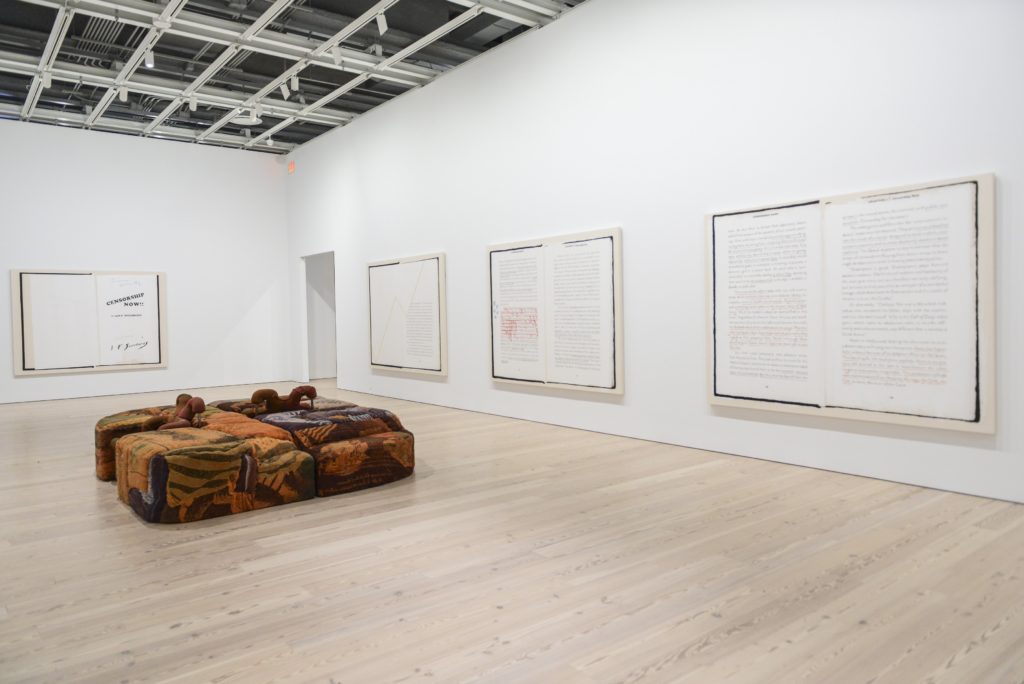
Installation view of Frances Stark, Ian F. Svenonius’s “Censorship Now” for the 2017 Whitney Biennial. Collection of the artist; courtesy Gavin Brown’s enterprise, New York. Photograph by Matthew Carasella. Also pictured: Jessi Reaves, Ottoman with Parked Chairs, 2017. Collection of the artist; courtesy Bridget Donahue, New York/Herald St, London. Photograph by Matthew Carasella.
With regard to non-representational painting, several artists—among them Jo Baer, Shara Hughes, Carrie Moyer, Ulrike Müller, and Torey Thornton—expertly shake off the copycat vacuity the art market greedily embraced just a few years ago. Hughes, for one, makes lusciously colored, brightly patterned landscape paintings that channel Marsden Hartley. Moyer, for her part, sublimates the bright agitprop she once made as a member of the artist-activist group Dyke Action Machine! into flat areas of color she juxtaposes against thin pools of acrylic. Both painters illustrate the biennial’s unofficial credo: No Zombie Abstraction need apply.
But none of the aforementioned brush-on-canvas experiments point to painting’s future direction quite the way Frances Stark’s suite of text-based paintings does. Large-scale, hand-painted essay spreads copied from the pages of punk musician and writer Ian F. Svenonious 2015 book Censorship Now!!, Stark’s nine canvases channel the kind of militancy and rage that will surely become artistic lingua franca if Donald Trump actually gets to enjoy a third year of his misbegotten presidency. For the Whitney Biennial 2019, it’s impeachment or bust.
The Whitney Biennial 2017 is on view at the Whitney Museum of American Art, from March 17 to June 11, 2017.